First the finished piece:
What does it take to create a project like this? I'm glad you asked!
It starts with a call issued by the Dance School, requesting art proposals to brighten up the entrance staircase at the school, with a request that the 15-step art be cohesive, yet each step stand individually so the school could raise funds by finding sponsors for each individual step. The art further had to express a strong connection to the school.
After visiting the site and taking photos, I sent in the following proposal, mocked up with clip-art:
Uh-oh. Had I just proposed painting an entire staircase full of little silhouettes of actual people that were going to be about 5 inches high? Was this design even going to work?
When in doubt, create a prototype! I cut up some cardboard, added some color and traced some photos from the web using a sharpie, and tested these 'dummy' panels on my studio stairs. And what do you know, it seemed to work well. 5 inches is plenty high to capture a full figure in detail. Whew, what a relief!
However adding a 1/2 inch panel reduces the stair depth by 1/2 inch. Would that create a potential safety hazard? Possibly. Next thing I know I am digging up building codes to understand just how much leeway I had for reducing the tread depth safely. Turns out not a lot, just 1/4 inches. (BTW When I decided to embrace art, I never imagined reading building codes would be part of that equation!)
I decided I had no choice but to accept the risk of using 1/4 inch panels and having them warp!
Not having painted on these kinds of panels before, I knew I needed to experiment to ensure the panel + paint combination would behave as expected. I therefore made sure to order a few extras that I could 'play' with.
What followed was a few straight weeks of experimentation with many different paints, fluids, gels, finishes and application methods to see what would work best for this project:
To minimize potential warping of the panels, I then took the extra precaution of coating the back of each panel with an acrylic polymer that hardens into a stiff layer. Stiffer panels should be less likely to warp (or so the theory goes).
The painting process was divided into two stages:
Stage 1: Paint a 'rainbow' background on all the steps, along with the central figure.
Stage 2: Paint silhouettes of individual students
Would a rainbow spectrum actually work? Would some of the background colors be too dark? Too light? Could I control the gradations? Would silhouettes be visible against the changing background?
Time to do another test, this time creating a 9"x12" maquette (i.e. scale model):
Once I had a background photo that worked, it was time to paint in the background colors into the panels. Here's a time-lapse video showing that process:
Why would I need to sift through all 6000+ photos? Because not every photo or pose turns into a successful silhouette. The shape of the sihouette has to clearly convey the dancer's motion, intent, and dance-style and most photo angles just dont work. I was also keen to tap into the diversity of the school's students (genders, ethnicities, body-types, etc) and this required going through all the photos with an eagle eye.
A couple of sifting days later, I had a set that would work. The next step was to convert each dancer into a sihouette. Easier said than done!
For the next couple of days, I sat on my workstation, painfully tracing the outline of each dancer and then converting the shape into a silhouette. Let's just say I am not keen to repeat this part of the project - like, ever!
Once I had my silhouettes, I needed to design the actual staircase mural to scale. For this, I recruited Microsoft Publisher, creating a 5'x6' document and inserting and placing all 80(!) silhouettes in it.
To go from computer silhouette to painted panel, I would need to print the silhouettes at real size, then trace them onto the panels one by one, and then paint each silhouette figure carefully. Very, very carefully!
Here's a quick closeup of the dancer silhouettes. Quick, can you count them all?
The first step of the process was to seal in the paint with two layers of transparent acrylic paint polymer (it's basically paint without any pigment - so it behaves just like paint and binds to the underlying paint very well), followed by three coats of anti-scuff coating for a total of 5 protective layers between the paint and the errant shoe.
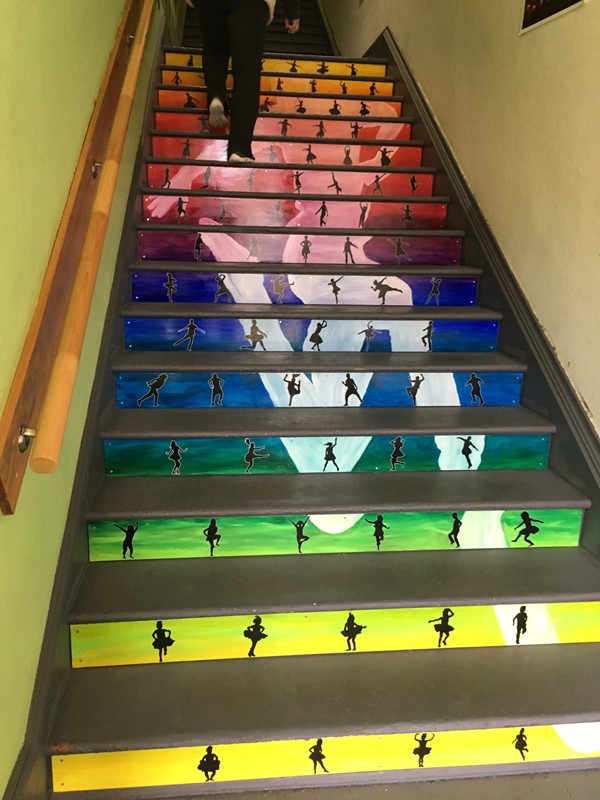
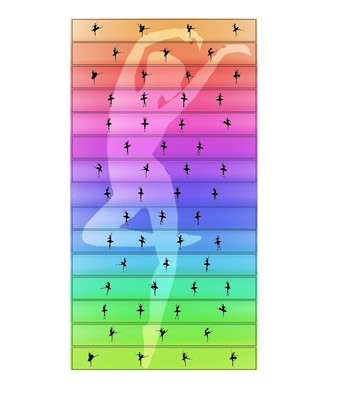
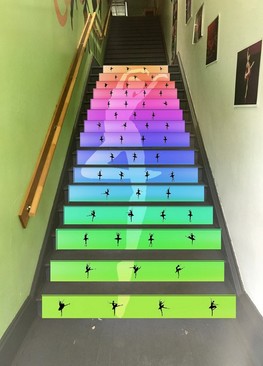
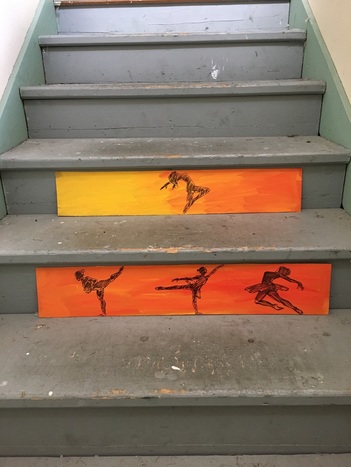
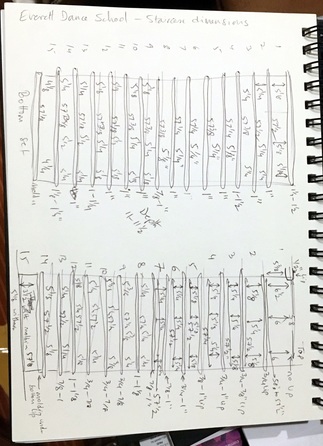
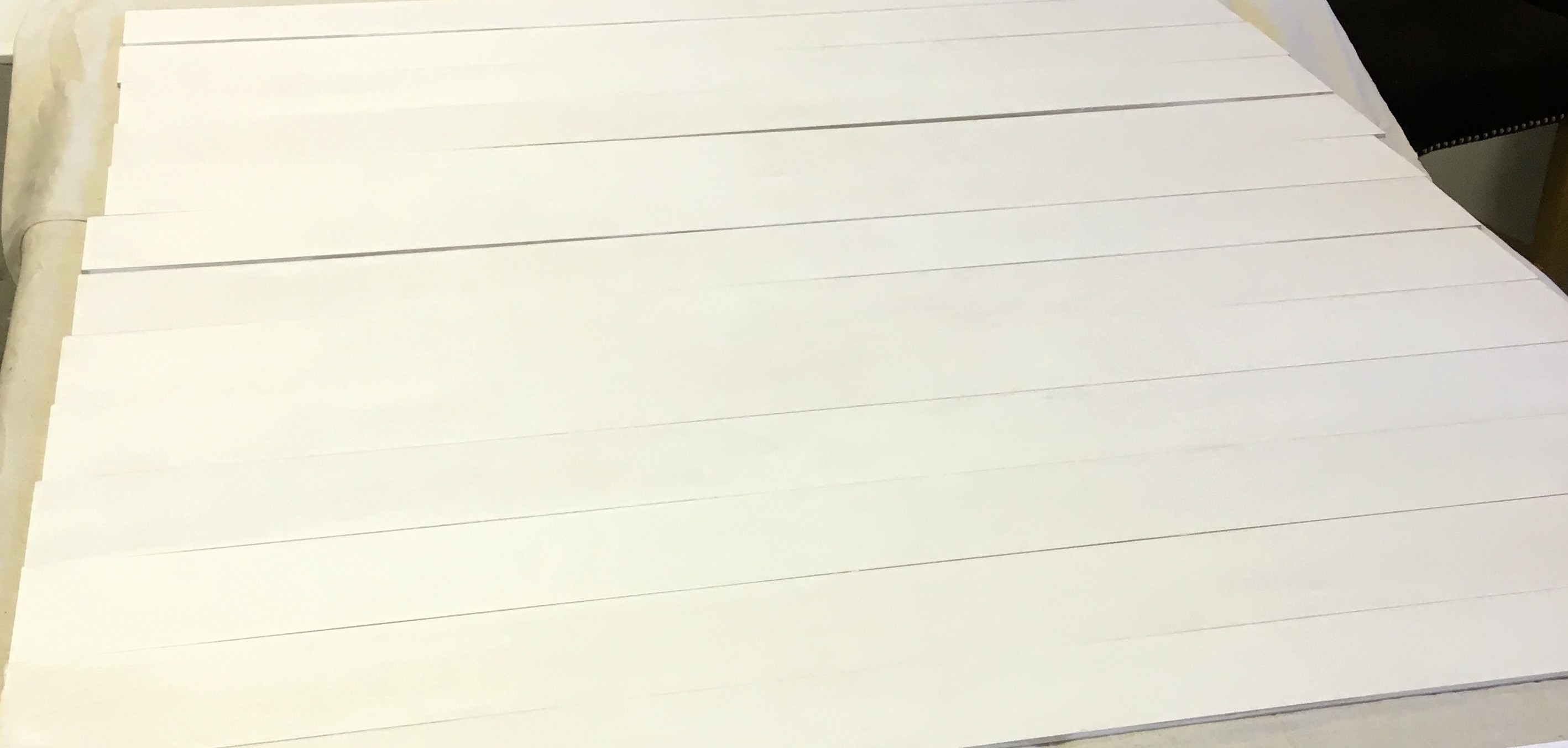
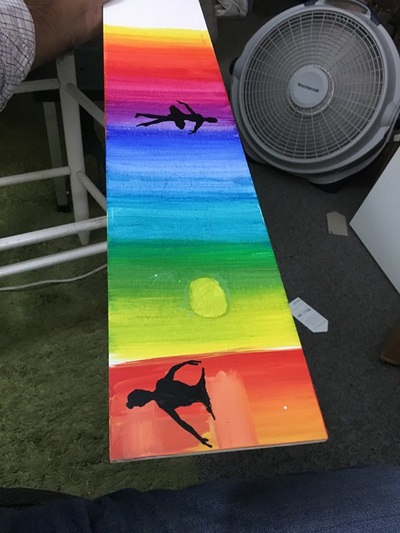
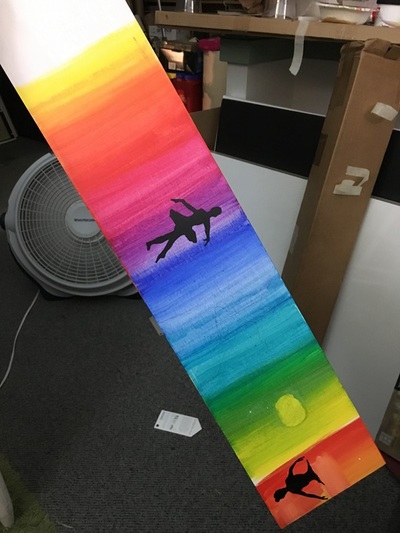
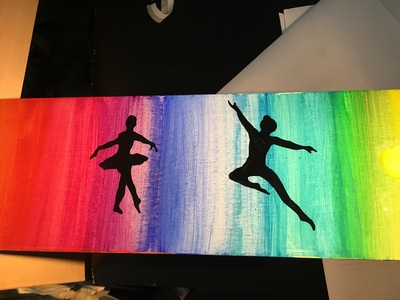
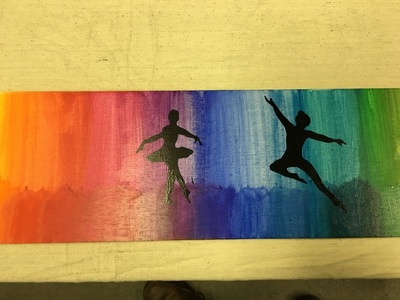
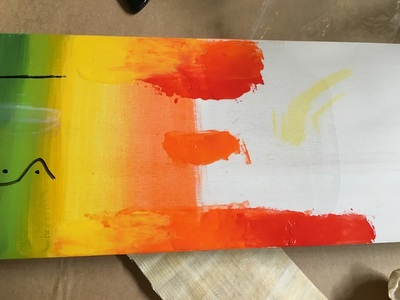
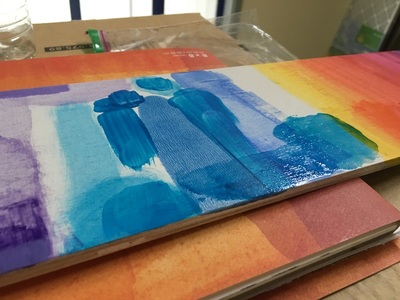
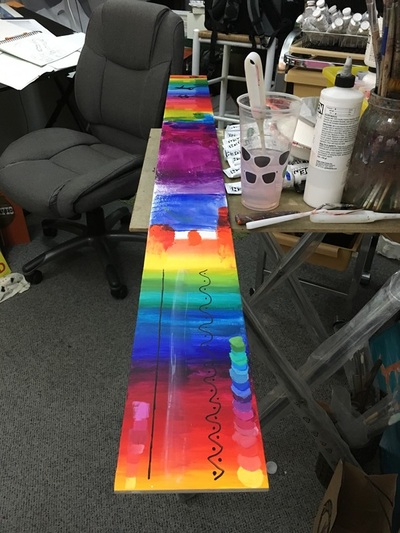
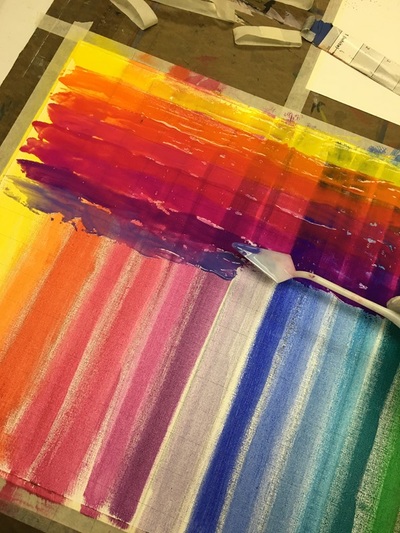
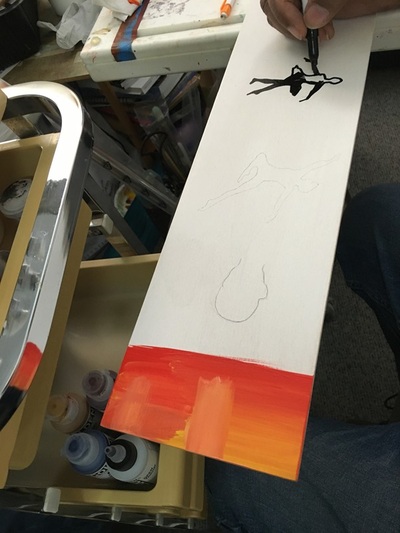
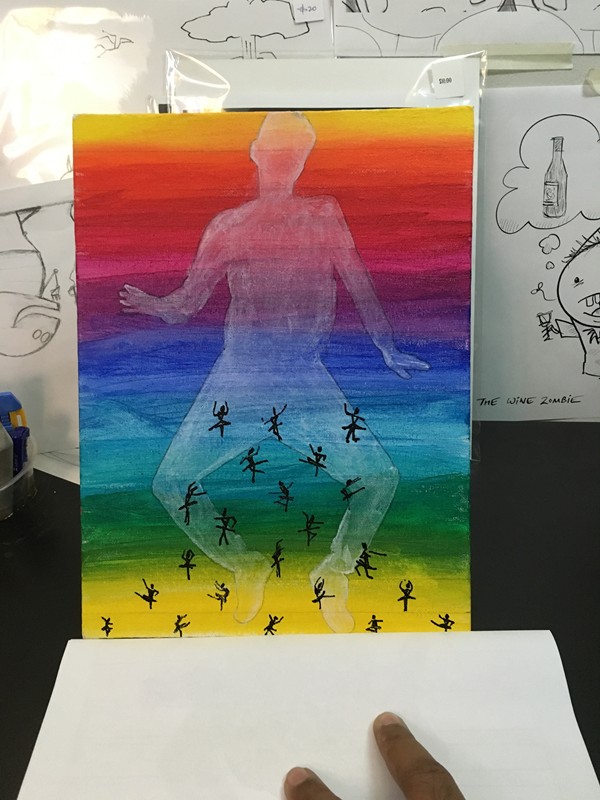
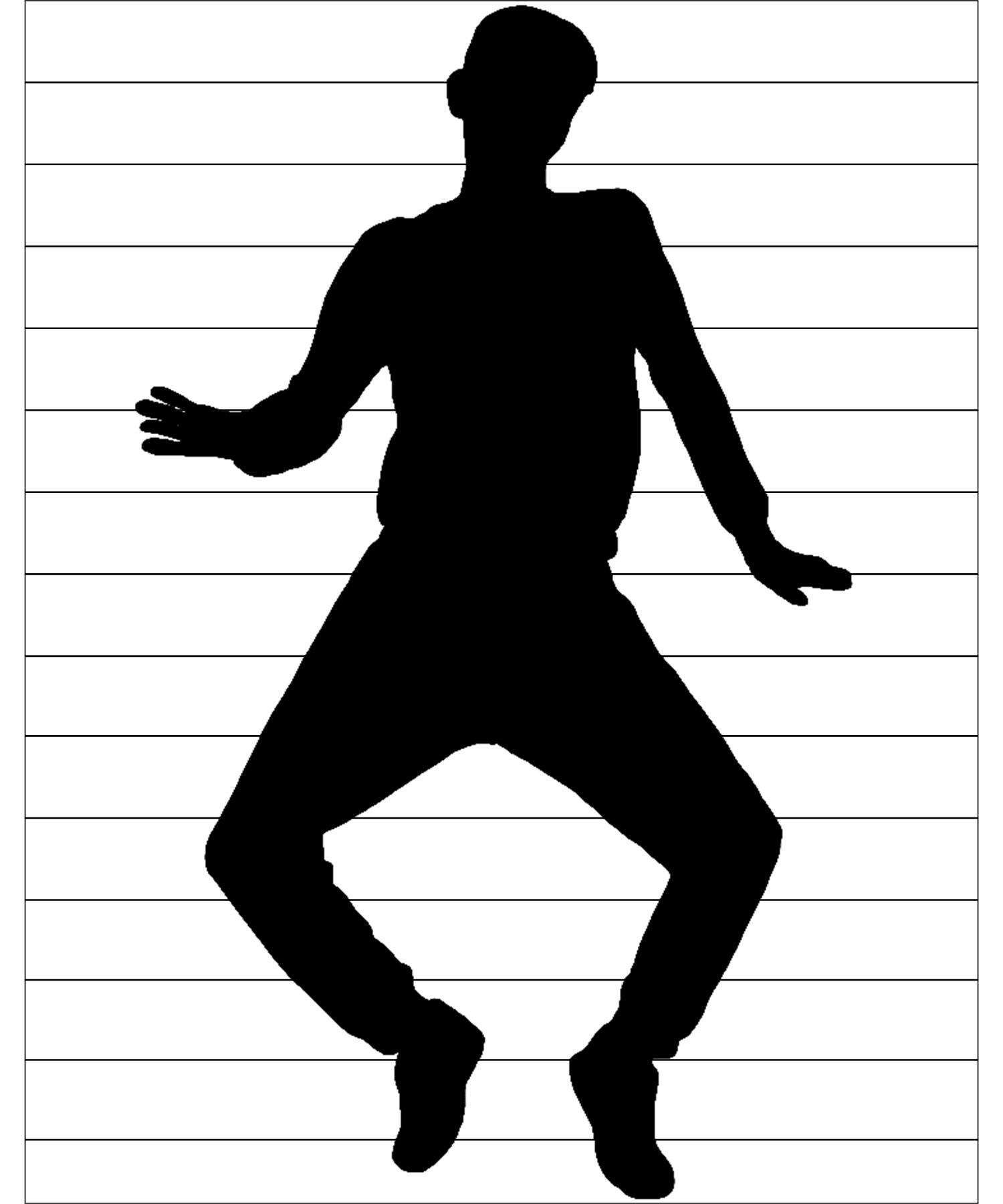
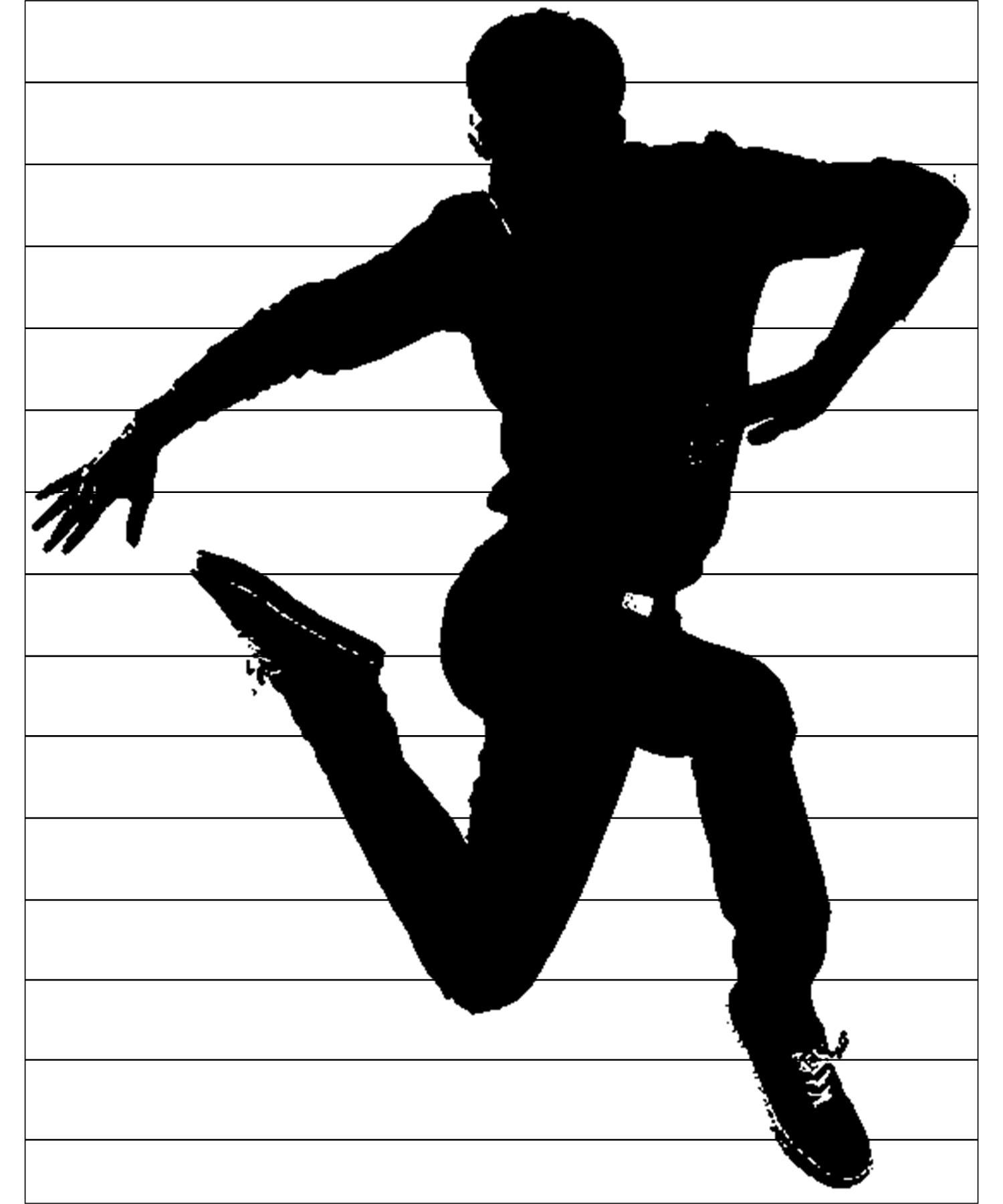
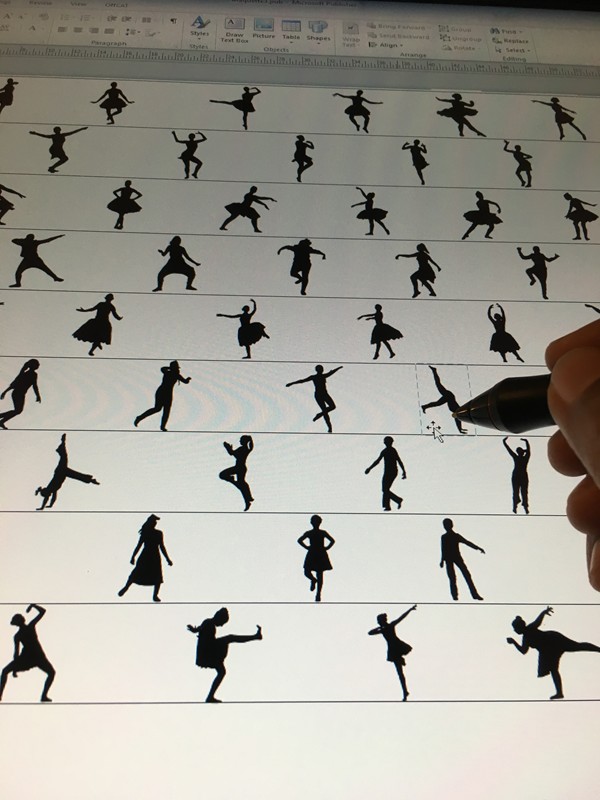
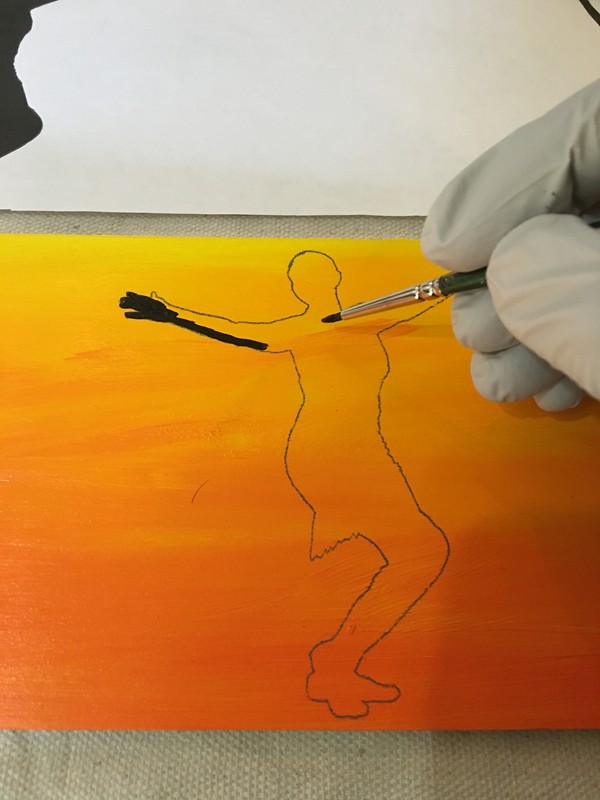
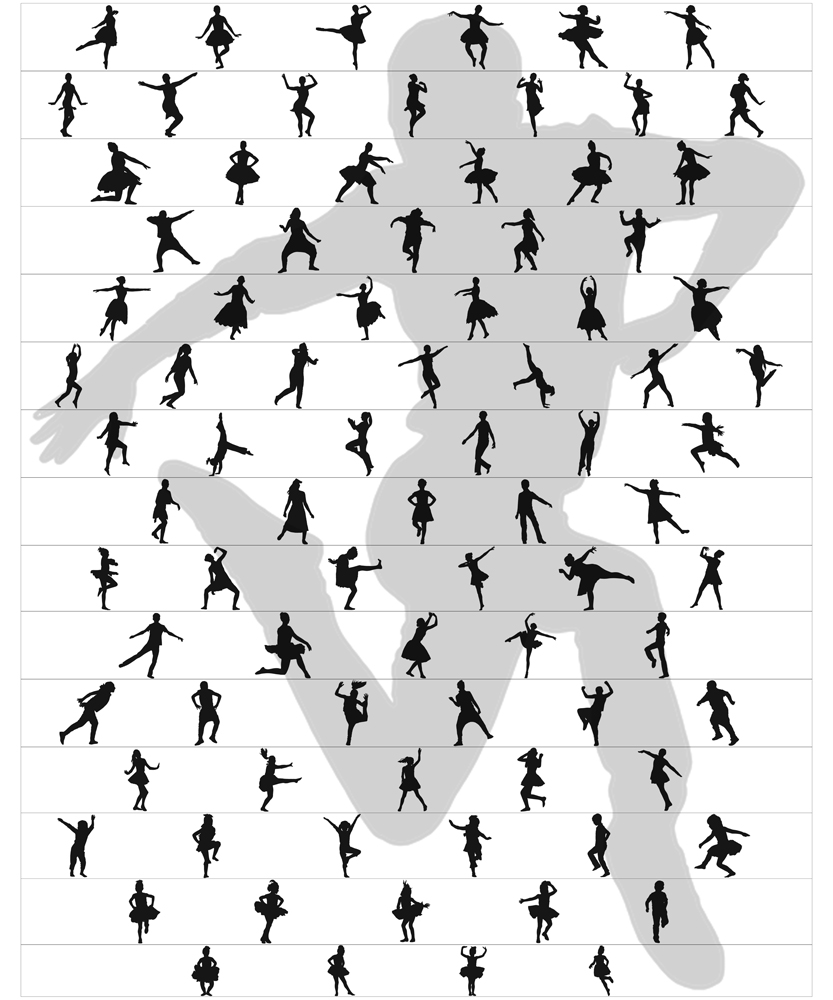
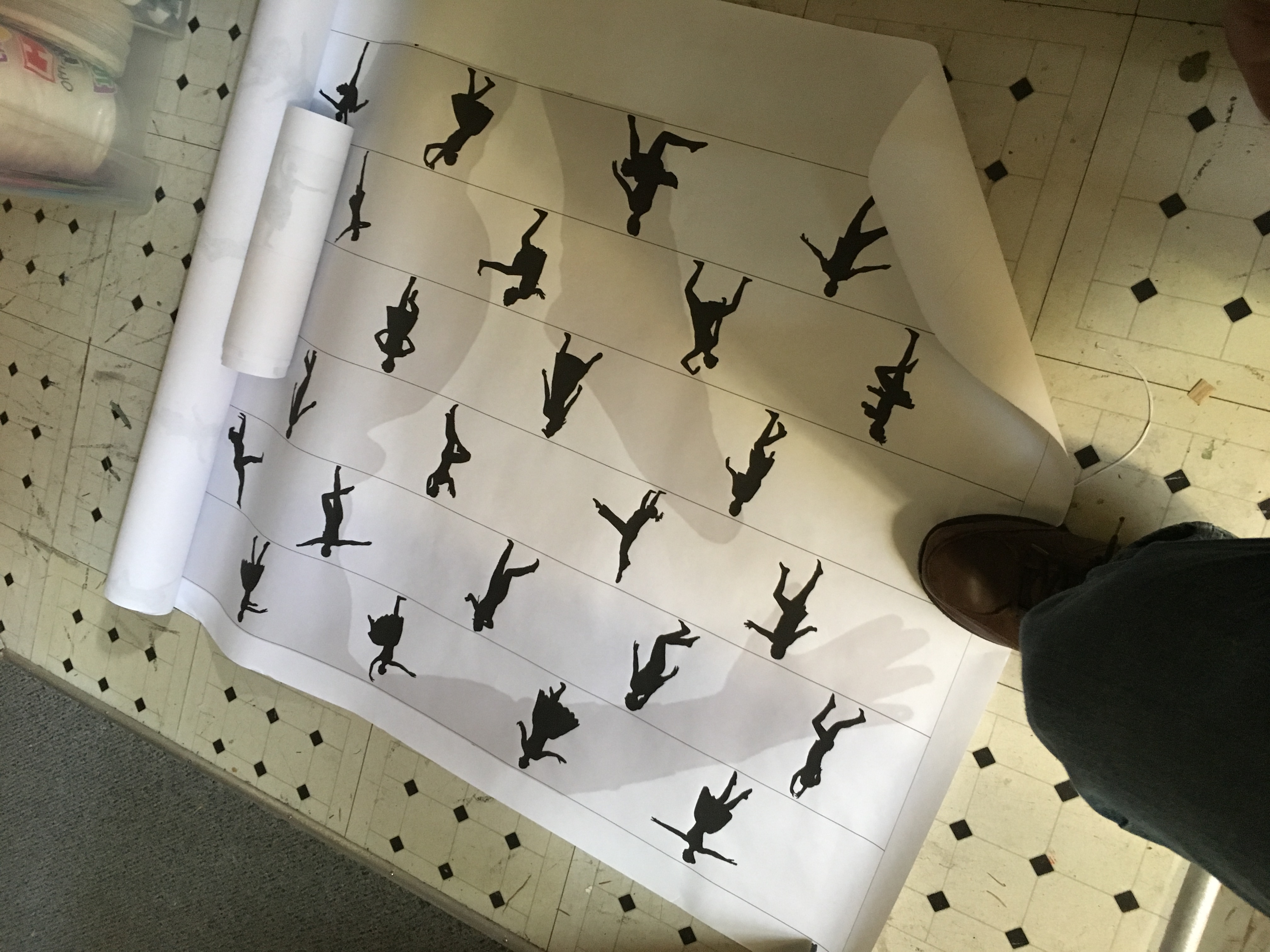
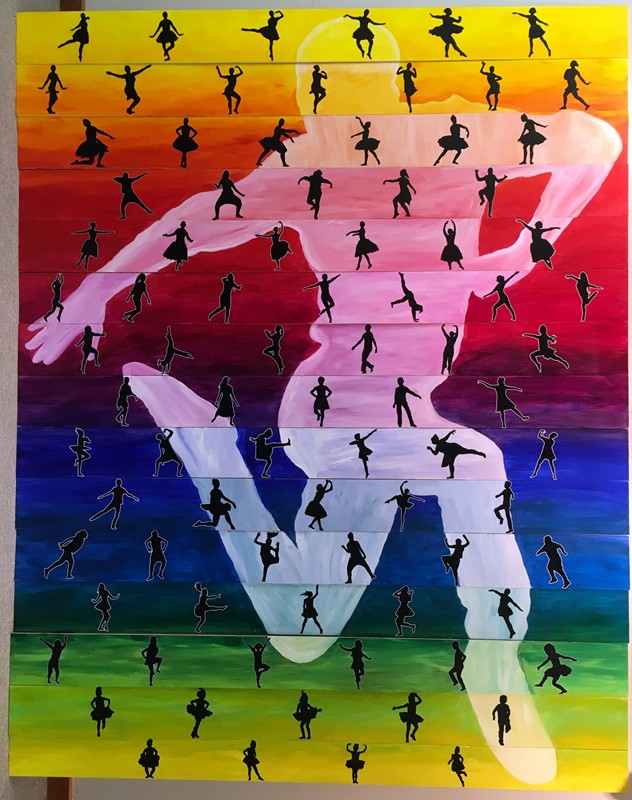
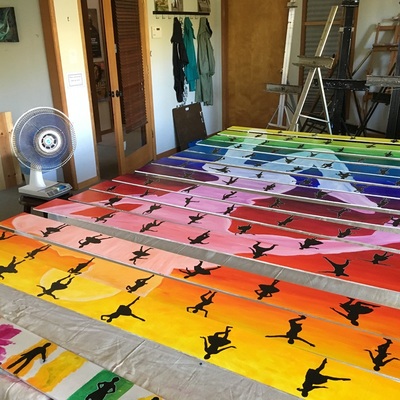
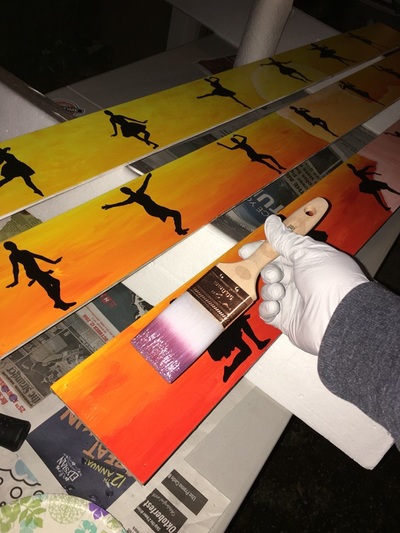
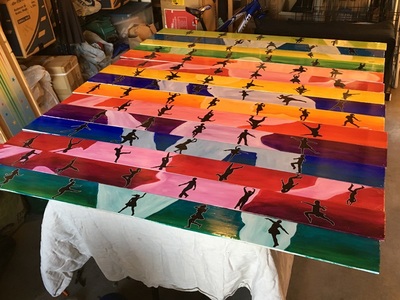
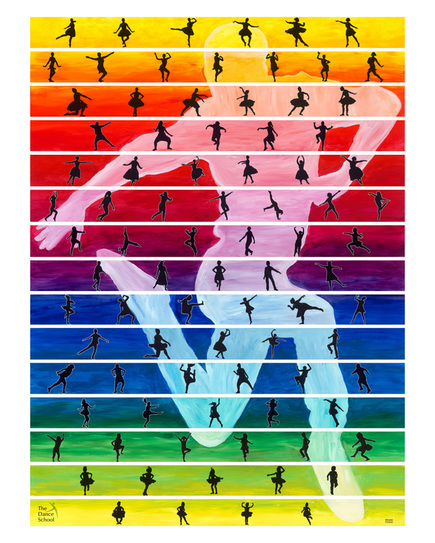
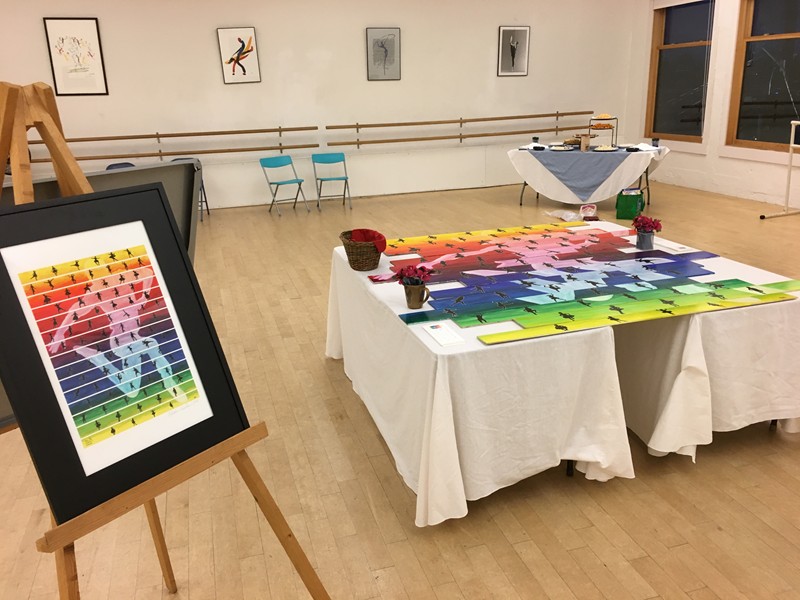
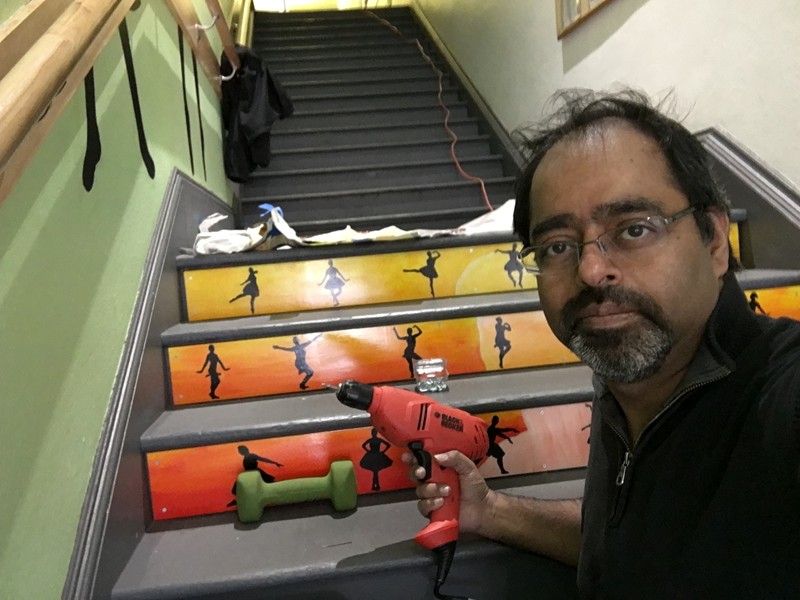
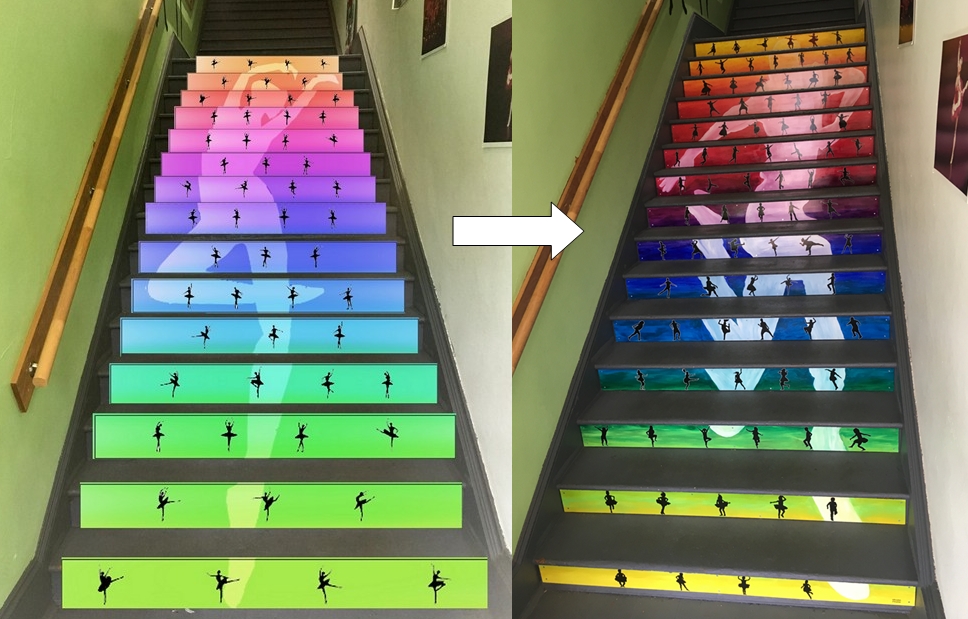
 RSS Feed
RSS Feed